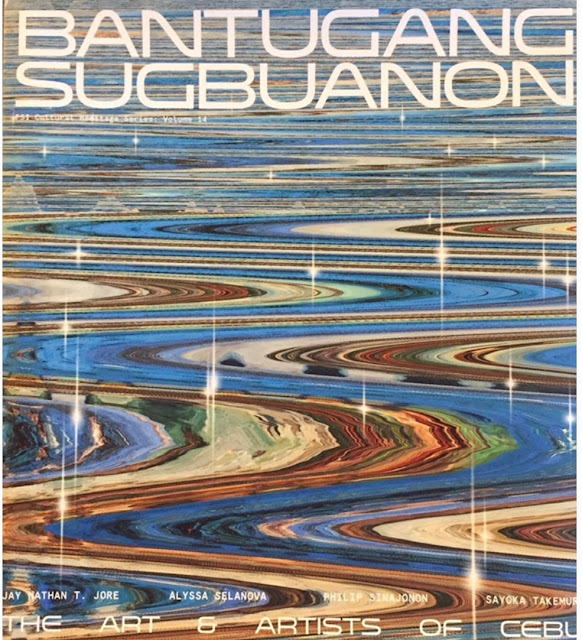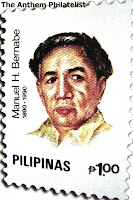Gen.Vicente Lukban on Stamps

Vicente R. Lukbán (February 11, 1860–November 16, 1916), was a Filipino officer in Emilio Aguinaldo's staff during the Philippine Revolution and the politico-military chief of Samar and Leyte during the Philippine-American War. The Americans credited him as the mastermind of the infamous Balangiga massacre, in which more than forty American troopers were killed. Later investigations by historians, however, disclosed that Lukban played no actual part in the planning of the attack.
Lukbán was born in Labo, Camarines Norte on February 11, 1860 to Agustin Lukbán of Ambos Camarines and Andrea Rilles of Lucban, Tayabas. He completed his early education at Escuela Pia in Lucban, continued his studies at Ateneo Municipal de Manila, and took up Bachelor of Laws at the University of Santo Tomas and Colegio de San Juan de Letran.
He returned to Labo after resigning from his job at the Manila Court of First Instance. He married Sofía Dízon Barba and the union produced four children: Cecilia, Félix, Agustín, and Vicente, Jr. Sofía died after their last child was born. Lukbán then left his children in the care of his siblings so that he could devote his time to the cause of the revolution.
Lukbán, thereafter, accepted the post of Justice of the Peace. In 1884, he was inducted into Freemasonry, Luz de Oriente ("Light of the Orient"). The organization had attracted many intellectuals and middle-class Filipinos to its ranks. In 1886, he stopped working in the judicial office and busied himself with agriculture and commerce in Bicol. He formed La Cooperativa Popular aimed at promoting the cooperative business activities of small and medium scale producers with the aim to increase their income from the lands by selling their products without passing through middle men. Part of the profits of the cooperatives were secretly remitted to the revolutionary movement of Andrés Bonifacio, the Katipunan. The cooperative also served as an effective covert means of spreading the ideals of the revolution. Their members could move around freely without arousing the suspicion of the Spanish authorities.
By 1896, Lukbán had centralized the funds of the cooperatives into the coffers of the revolution. He periodically remitted money to the evolving revolutionary movement. At the same time, he acted as an emissary of the Katipunan unit in Bicol to gather information about the Spanish movements in Manila and to determine how such movements affected Bicol provinces. On one of his trips to Manila, he was arrested by the guardia civiles, ("civil guards") and charged with conspiring to overthrow the government. He was imprisoned in Bilibid prison and tortured[citation needed] at Fort Santiago. While Lukbán was still in prison, the Philippine Revolution began. On August 18, 1897, he was released from jail, together with Juan Luna and immediately thereafter, joined the revolutionary government’s armed forces.
In the army, he was commissioned to serve as one of Emilio Aguinaldo's officers. Lukbán was among the few who assisted Aguinaldo in planning war strategies and activities. When the Pact of Biak-na-Bato was signed, he was asked by Aguinaldo to be one of the members of his party going into exile in Hong Kong. Lukban spent his exile in Hong Kong studying military science under the Lord Commander Joseph Churchase of the British Naval command. This enabled him to master the arts of soldiery — fencing, shooting, gunpowder and ammunitions preparations, and the planning and execution of war strategies and tactics.
Shortly after Aguinaldo proclaimed Philippine Independence in 1898, Lukbán was sent to the Bicol region to direct military operations against the Spaniards. His successes in Bicol ushered him into a new and challenging assignment: as Leyte and Samar's politico-military chief. Lukbán married his second wife Paciencia Gonzales in Samar. This union produced eight children: Victoria, Juan, María, Fidel, Rosita, Ramon, José and Lourdes.
On December 31, 1899, a hundred riflemen under Lukbán gathered and he proclaimed himself the new governor of Samar under the First Philippine Republic. When the U.S. 1st Infantry Regiment landed on Samar’s shores in January 1901, they were met by suicidal charges of bolomen under Lukbán’s command. Nevertheless, Lukban was soon forced to retreat into the island's interior, leaving behind an organized resistance network. Samareños caught cooperating with the Americans were executed swiftly and dramatically. When U.S. General Arthur MacArthur offered Lukban amnesty in exchange for his surrender, he turned it down and swore to fight to the end.
Although bearing command responsibility for the Balangiga massacre, Lukbán learned about it a week later, on October 6, 1901. Other than a letter to town mayors encouraging them to follow the Balangiga example on the same date, there are no published records of his reaction to the news or later comment from him.
After Baldomero Aguinaldo’s capture in 1901, Samar, under Lukbán's leadership, remained one of the few areas of Filipino resistance. American troops encountered few enemies to fight in the open, finding themselves constantly harassed by Lukbán's guerrillas. However, two prisoners later revealed the location of Lukbán’s secret headquarters along the Cadac-an River, Basey, Samar. The prisoners warned that the fort was impregnable, but Major Littleton Waller sent scouts to investigate. On November 17, 1901, Waller attacked with an amphibious assault team up the river, as Captains Bearss and Porter attacked by land with forces from Basey and Balangiga. The amphibious assault was foiled by a Filipino trap, and Porter attacked alone. The Filipino soldiers fled before machine gun fire, leaving scaling ladders behind for the Americans. The retreating Filipinos were gunned down from behind as the American flag was raised above the garrison. It was a clear victory for the United States, with 30 Filipinos dead and the capture of Lukbán and his lieutenants. The war on Samar, however, would not truly be over until the rugged interior was conquered.
Lukbán's career did not end with his captivity. He was elected governor of Tayabas (now Quezon province) in 1912 and re-elected in 1916. He died at his Manila residence on November 16, 1916
.
Date of Issue: July 31, 1987






